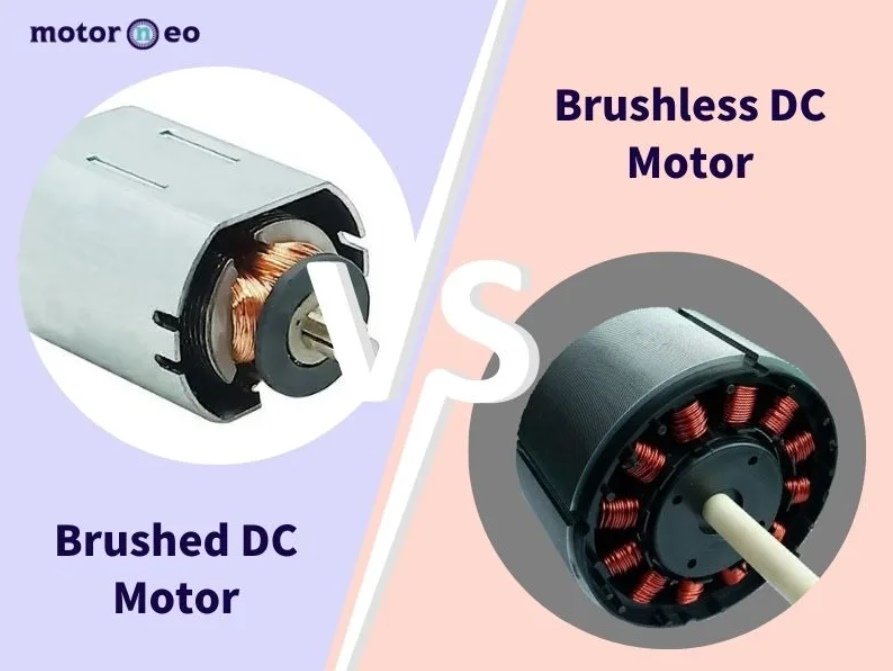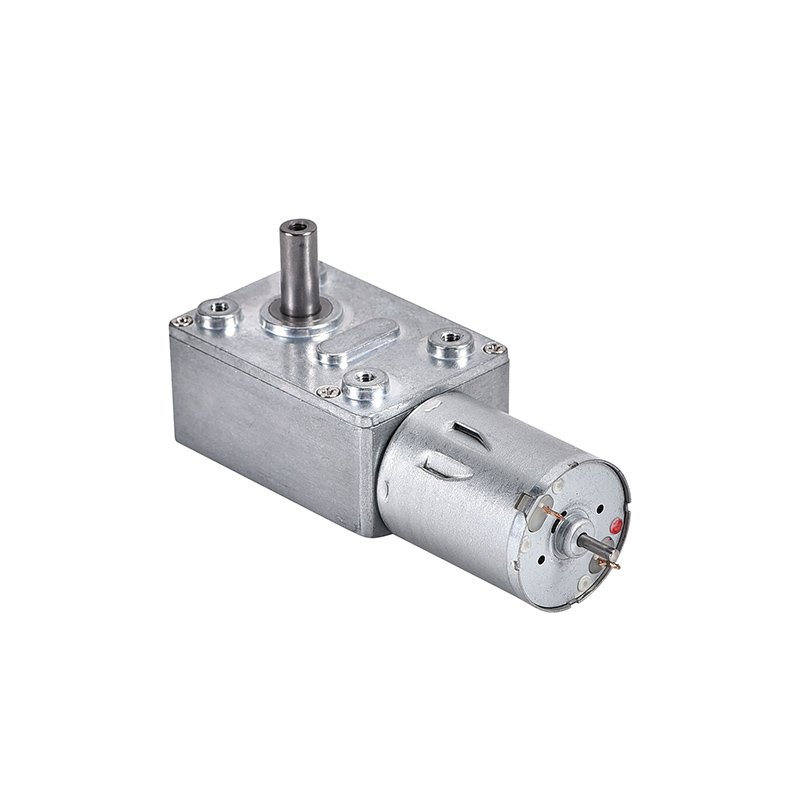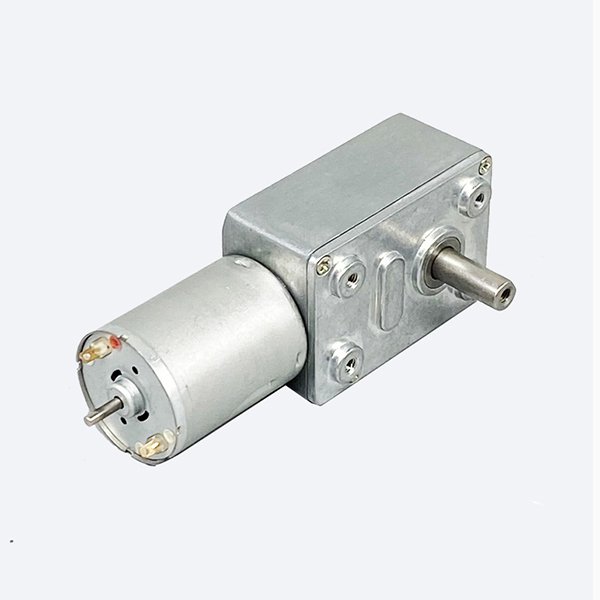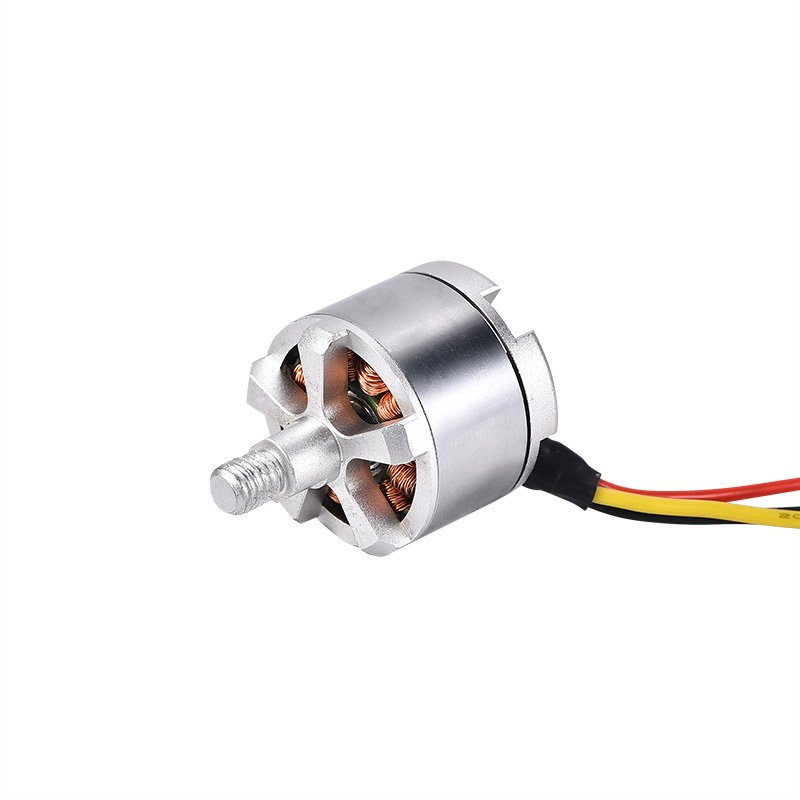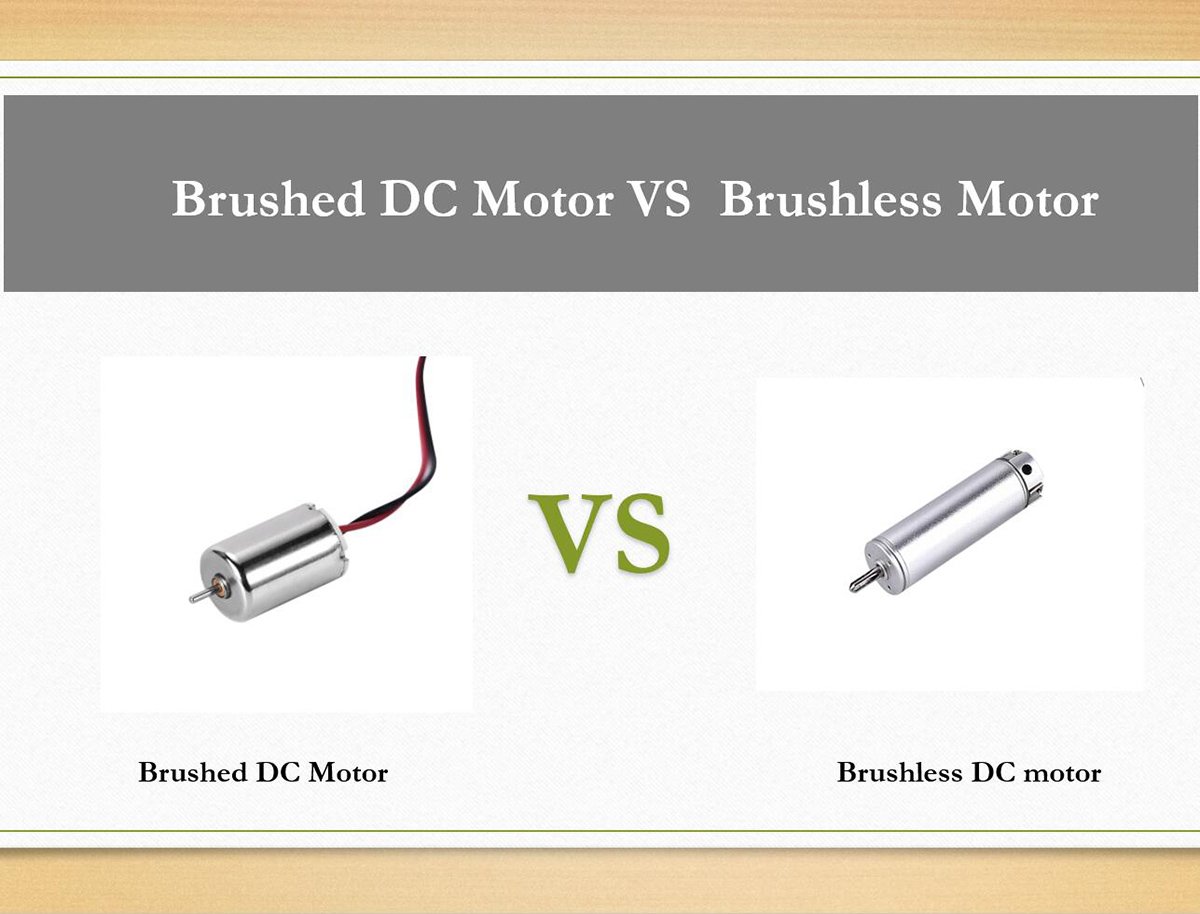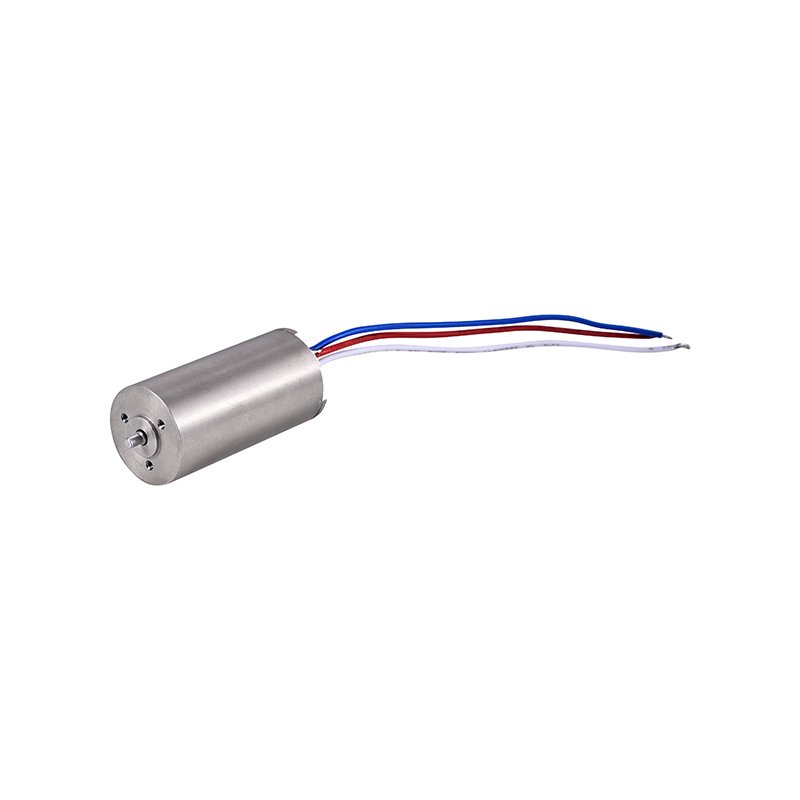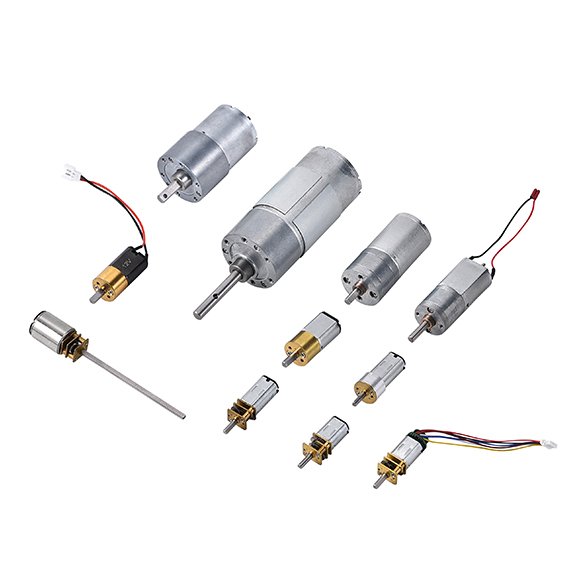You often find that brushless motor technology outperforms brushed motors in efficiency, lifespan, and performance. The main reason lies in the design: brushless motors do not use brushes, so they avoid friction and wear. This difference leads to longer service life and higher efficiency. For example, compare average lifespans:
Motor Type | Average Lifespan (Hours) |
|---|---|
Brushed Motors | 1,000 – 3,000 |
Brushless Motors | 10,000 – 20,000 |
When you choose between brushed vs brushless motors, these differences become critical for industries like robotics, medical devices, and smart home products where INEED’s expertise provides real value.
Key Takeaways
Brushless motors last significantly longer than brushed motors, with lifespans of 10,000 to 20,000 hours compared to just 1,000 to 3,000 hours for brushed motors.
Choose brushless motors for higher efficiency; they can achieve up to 94% efficiency, saving energy and reducing operational costs.
Brushless motors require less maintenance since they lack brushes, leading to lower downtime and fewer replacements over time.
For applications needing precise control and high torque, brushless motors outperform brushed motors, making them ideal for robotics and smart devices.
Investing in brushless motors may have a higher upfront cost, but they offer long-term savings through reduced energy use and maintenance.
Brushed vs Brushless Motors Efficiency
Brushed Motor Energy Use
When you look at brushed motors, you notice that they rely on physical contact between brushes and the commutator. This contact causes friction and heat, which leads to energy losses. The friction not only wastes energy but also wears down the brushes over time. As a result, brushed motors convert less electrical energy into useful mechanical energy. You often see this in devices where the motor gets warm quickly or needs frequent maintenance.
Brushed motors also lose efficiency as the brushes wear out. The carbon brushes create resistance, which means more power is needed to achieve the same output. In many applications, this leads to higher electricity bills and more frequent replacements. If you use a brushed dc motor in a device that runs for long periods, you will likely notice the drop in performance and the need for regular servicing.
Brushless Motor Efficiency
Brushless motors use a different approach. Instead of brushes, they use electronic controllers to switch the current in the motor windings. This design removes the main source of friction and mechanical wear. Because of this, brushless motors achieve much higher efficiency. You get more mechanical power from the same amount of electrical energy.
For example, INEED brushless dc motors can reach efficiency levels as high as 94% when operated with a 24V inverter. These motors also consume about 10% less power than standard motors. If you compare a brushless dc motor to a brushed dc motor, you will see that the brushless version provides 15-20% more efficiency. This means you save energy and reduce operating costs over time.
You can see these improvements in real-world settings. In car factories, brushless dc motors use about 26% less power than AC induction motors. On a conveyor, a brushless dc motor may consume only 31 watts, while an AC motor uses 42 watts for the same task. These savings add up, especially in industries where motors run all day.
Tip: Brushless motors not only save energy but also run cooler and quieter, making them ideal for sensitive environments.
INEED Brushless Motor Applications
You find the benefits of brushless motors in many INEED products. For instance, INEED’s BLDC coin vibration motors draw less current than traditional brushed motors. This feature extends battery life in wearables like smart rings, where every bit of energy efficiency matters. The table below shows how these motors compare:
Motor Type | Lifespan | Reliability |
|---|---|---|
BLDC Coin Vibration Motors | Over 1 million cycles | High reliability, fewer replacements needed |
Traditional Brushed Motors | Typically lower cycles | Lower reliability, frequent replacements needed |
In addition, INEED brushless dc motors power smart devices and industrial equipment. When you use these motors in pool cleaners or smart curtains, you get more consistent performance and lower energy use. For example, switching to brushless motors in electric vehicles can improve fuel savings by 3 to 5%. This change reduces operational costs and supports sustainability goals.
You can see the impact of INEED brushless motors in the chart below. These motors improve position accuracy, reduce drift, and increase travel distance in automated systems:

Mean position drift drops by 86%.
Mean rotation deviation improves by 75%.
Mean travel distance increases by 46%.
When you compare brushed vs brushless motors, you see that brushless motors deliver better efficiency, longer lifespan, and higher reliability. INEED’s brushless dc motor and vibration motor products show these advantages in real-world applications. If you want to improve energy efficiency and reduce maintenance, brushless motors offer a clear solution.
Lifespan and Maintenance of Brushed and Brushless Motors
Brushed Motor Lifespan Factors
When you use brushed motors, you notice that their lifespan depends on several key factors. The most important reason for shorter service life is the physical contact between brushes and the commutator. This contact causes friction, which leads to wear and tear. You often see the brushes wearing down, especially if the motor runs at high speeds or draws more current than recommended. If you operate a brushed motor in a humid environment, moisture can mix with brush dust and create a conductive paste. This paste increases arcing and speeds up wear.
Take a look at the table below to see what affects the average lifespan of brushed motors:
Factor | Description |
|---|---|
Operating Conditions | High armature speeds can lead to rapid wear; minimizing speed can extend motor life but may reduce power output. |
Current Draw | High current draw relative to the motor’s size can increase brush wear; proper sizing is essential. |
Operating Environment | High humidity and moisture can create conductive paste from brush dust, leading to arcing and increased wear. |
You can extend the lifespan of brushed motors by lowering the armature speed and reducing current draw. Some users have reported reaching 8,600 hours of life by following these practices. However, most brushed motors require regular inspection and replacement of brushes, which adds to maintenance time and cost.
Brushless Motor Durability
Brushless motors offer a much longer lifespan because they do not use brushes. You avoid the main source of friction and mechanical wear. Instead, brushless motors rely on electronic commutation, which means fewer moving parts that can fail. When you operate a brushless motor, you benefit from quieter operation and less heat buildup. This design leads to higher efficiency and less frequent servicing.
The durability of brushless motors depends on three main factors:
Bearing life: Bearings can wear out over time due to rotation, load, and heat.
Winding insulation: High temperatures and electrical stress can break down insulation, causing motor failure.
Electronic components: Capacitors and ICs may degrade faster at high temperatures.
If you keep the motor within its rated limits, you can expect a brushless dc motor to run for 20,000 to 40,000 hours or more. Most failures come from bearing wear or insulation breakdown, not from the motor itself. You can reduce these risks by using high-quality bearings, proper lubrication, and controlling the operating temperature.
Here is a table showing the main limiting factors for brushless motors in continuous operation:
Limiting Factor | Description | Impact on Runtime | Mitigation Strategies |
|---|---|---|---|
Bearing Life | Mechanical wear, lubricant degradation | Most common point of failure | High-quality bearings, proper lubrication |
Winding Insulation Degradation | High temperatures, electrical stress | Can cause motor failure | Operate within thermal limits |
Electronic Component Lifespan | Capacitors, MOSFETs, ICs degrade at heat | Loss of control or shutdown | Effective heatsinking, ambient temp control |
You see that brushless motors require less maintenance. You do not need to replace brushes or clean the commutator. Most maintenance involves checking bearings and keeping the motor clean.
INEED Product Reliability
When you choose INEED brushless gear motors, you get a product designed for extended service life and reliability. INEED’s brushless gear motors can last tens of thousands of hours, far exceeding the industry average for brushed motors, which is about 1,000 hours before needing brush replacement.
Motor Type | Service Life |
|---|---|
INEED Brushless Gear Motor | Tens of thousands of hours |
Industry Average (Brushed) | About 1,000 hours (requires brush replacement) |
You benefit from INEED’s strict quality control and testing processes. The company inspects every motor at multiple stages, including material checks, lifetime tests, and final inspections. This attention to detail ensures that you receive motors with consistent performance and long lifespan.
Maintenance requirements also differ between brushed and brushless motors. The table below summarizes what you need to do for each type:
Motor Type | Maintenance Requirement |
|---|---|
Brushed | Regular inspection and replacement of carbon brushes due to wear from physical contact during commutation. |
Brushless | Lower maintenance needs; no brushes to replace, resulting in fewer parts that wear out. |
Note: INEED brushless motors provide quieter operation and higher efficiency, which means you spend less time and money on maintenance.
You see the value of brushless motors in applications where reliability and long lifespan matter. INEED’s brushless gear motors power smart curtains, pool cleaners, and medical devices. You get consistent performance, reduced downtime, and quieter operation. If you want to minimize maintenance and maximize efficiency, brushless motors from INEED offer a clear advantage.
Performance Metrics: Speed, Torque, and Control
Brushed Motor Performance
When you use brushed motors, you notice that speed and torque have limits. The physical contact between brushes and the commutator restricts how fast the motor can spin. Most brushed motors in consumer electronics reach up to 6000 RPM. Some models, like Dunkermotoren, operate between 3000 and 4000 RPM.
Motor Type | Speed Range |
|---|---|
Brushed DC Motors | Up to 6000 RPM |
Dunkermotoren Motors | 3000 to 4000 RPM |
You often see brushed motors lose efficiency as speed increases. Friction causes heat and wear, which reduces performance over time. Control is also less precise because the brushes can wear unevenly, leading to inconsistent output.
Brushless Motor Performance
Brushless motors change how you think about speed and torque. You get higher output power and torque compared to similarly sized brushed motors. Brushless motors reach much higher speeds, making them ideal for demanding tasks. You also benefit from better control because electronic commutation allows for precise adjustments.
Brushless motors provide more power and torque than brushed motors of the same size.
You get higher output power density and rotational speed.
Brushless motors offer smoother and quieter operation.
When you use a brushless dc motor in robotics or industrial equipment, you see improved efficiency and reliability. You can control speed and torque with great accuracy, which is important for applications like pool cleaners and smart curtains.
INEED Solutions for Industry Needs
You find INEED brushless motors in many advanced devices. For example, INEED’s brushless gear motors in pool cleaners deliver high torque, allowing the cleaner to climb stairs and remove debris. In smart curtains, INEED brushless motors provide quiet and precise movement, keeping noise below 30dB. Dental handpieces powered by INEED brushless dc motors offer high torque, maintenance-free operation, and quiet performance.
Feature | INEED Brushless Motors | Competitors |
|---|---|---|
Maintenance | Maintenance-free | Varies |
Torque | High torque | Varies |
Energy Efficiency | High | Varies |
Noise Level | Quieter | Varies |
Application Suitability | Grinding, carving, polishing | Varies |
You can customize INEED brushless motors for your needs. Adjust electrical performance, change wire length, modify connectors, or set motor speed. You can also select gear ratios, shaft shapes, and mounting options. Optional features like encoders and gearboxes help you optimize performance metrics for your application.
Tip: INEED’s technical support team helps you choose the right brushless motor and customize it for your project. You get expert advice and fast response times.
You see why brushless motors outperform brushed motors in speed, torque, and control. INEED’s solutions give you the flexibility and reliability you need for modern devices.
Choosing Between Brushed and Brushless Motors
Application Suitability
When you select a motor for your project, you need to think about why brushed vs brushless motors matter for your application. You want to maximize efficiency, lifespan, and performance. Brushed motors work well in simple devices where cost is a major concern. You see them in basic home appliances and some industrial machines. These motors offer straightforward operation and lower initial cost, but you must plan for regular maintenance and shorter lifespan.
Brushless motors give you more advantages in demanding environments. You get higher efficiency, longer lifespan, and less noise. You find these motors in electric vehicles, drones, medical devices, and smart home products. If you need precise speed control, high torque, or compact size, brushless motors are the better choice. You also benefit from reduced maintenance, which saves you time and money over the life of your equipment.
INEED experts recommend that you start by identifying your application needs. Calculate the required torque and speed. Match the motor and gear reducer to your specifications. Test prototypes to make sure your selection meets operational requirements. You should choose brushless motors for high-speed, high-torque, or long-duty-cycle applications. Brushed motors fit best in low-speed or budget-sensitive projects.
Tip: If you want reliability and minimal downtime, brushless motors offer a clear advantage for most modern automation systems.
Quick Comparison Table
You can use the table below to compare brushed vs brushless motors and see which fits your needs. The table includes INEED product examples to help you decide.
Feature | Brushed Motors (INEED) | Brushless Motors (INEED) |
|---|---|---|
Efficiency | 75-80% | 85-90% |
Lifespan | About 1,500 hours | 20,000+ hours |
Maintenance | Regular brush replacement | Minimal, mainly bearing checks |
Noise and Vibration | Medium | Low |
Size and Weight | Bulkier | More compact and lighter |
Speed Control | Within 10% | Within 1-2% |
Application Suitability | Home appliances, basic devices | Pool cleaners, smart curtains, dental handpieces |
Cost | Lower upfront cost | Higher cost due to electronics |
Performance | Lower speed and torque | Higher speed, torque, and control |
You see that brushless motors deliver better efficiency, longer lifespan, and higher performance. You pay a higher cost at first, but you save on maintenance and energy over time. INEED’s brushless motors power advanced devices like pool cleaners and dental handpieces, showing why they are preferred for critical applications.
Note: Always match your motor choice to your project’s needs. Brushless motors excel when you need reliability, speed, and long service life.
You see that brushless motors are the best choice for most high-performance and long-life applications. They offer high efficiency, low maintenance, and quiet operation. The table below highlights why industries prefer brushless motors:
Advantage | Description |
|---|---|
High Efficiency | 85–95% efficiency, saving energy costs |
Longer Lifespan | No brushes, less wear, more reliability |
Low Maintenance | Fewer parts to replace or repair |
Compact Design | Smaller size, fits tight spaces |
You make better decisions when you focus on efficiency, lifespan, and performance. INEED’s brushless motors help you achieve these goals in robotics, medical devices, and smart home products. Choose brushless motors for reliability and long-term value.
FAQ
Why do brushless motors last longer than brushed motors?
You get longer life from brushless motors because they do not use brushes. This design reduces friction and wear. You spend less time on maintenance and avoid frequent part replacements.
Why should you choose a brushless motor for high-performance applications?
You should pick brushless motors for high-performance tasks because they deliver higher speed, torque, and control. You also benefit from quieter operation and greater energy efficiency.
Why do industries prefer brushless motors for automation?
Industries prefer brushless motors because you see fewer breakdowns and lower maintenance costs. You also achieve better precision and reliability in automated systems.
Why does INEED recommend brushless motors for smart devices?
INEED recommends brushless motors for smart devices because you get compact size, low noise, and long lifespan. You also enjoy smoother operation and improved energy savings.
